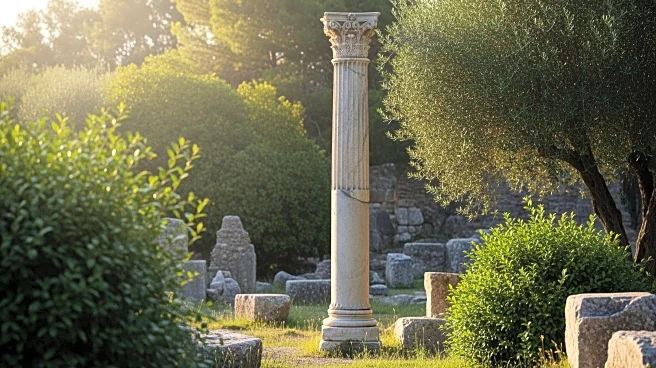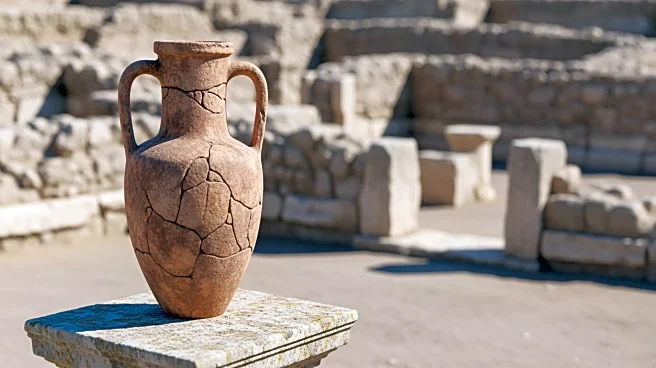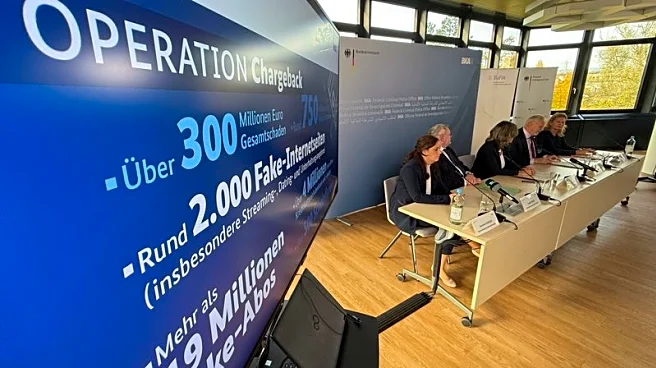What's Happening?
A new digital atlas has revealed that the road networks of ancient Rome were 50% longer than previously believed. This discovery was made possible through the use of advanced technology and newly accessible
sources, including satellite imagery and aerial photography. Over a five-year period, a team of archaeologists analyzed historical records, ancient journals, and other archival data to locate these ancient roadways. The study, published in Scientific Data, highlights the extensive reach of Roman roads, which now total nearly 186,000 miles across the Roman Empire, connecting regions from Spain to Syria. This research not only updates the known extent of Roman roads but also provides a more detailed understanding of secondary roads that connected rural areas and smaller settlements.
Why It's Important?
The findings significantly enhance the understanding of Roman infrastructure and its impact on historical developments. The extensive road network facilitated the movement of people, goods, and ideas, contributing to the spread of Christianity and other cultural exchanges across the Roman Empire. The study underscores the enduring influence of Roman engineering, as many modern roads still follow the paths laid out by the Romans. This research provides a foundational resource for further archaeological studies and offers insights into the economic and social dynamics of ancient Rome. The ability to visualize these routes helps historians and archaeologists better understand the logistical and strategic considerations of the Roman Empire.
What's Next?
The digital atlas and interactive map are now available online, providing a valuable tool for scholars, educators, and history enthusiasts. This resource is expected to spur further research into the Roman Empire's infrastructure and its role in shaping historical events. Future studies may focus on the specific uses of these roads and their impact on regional development. Additionally, the methodology used in this study could be applied to other ancient civilizations, potentially uncovering more about their transportation networks and societal structures.
Beyond the Headlines
The discovery of these extensive road networks also raises questions about the maintenance and operation of such a vast infrastructure. Understanding how the Romans managed these roads could provide insights into their administrative capabilities and resource management. Furthermore, the study highlights the potential for modern technology to revolutionize archaeological research, offering new ways to explore and understand ancient history.













